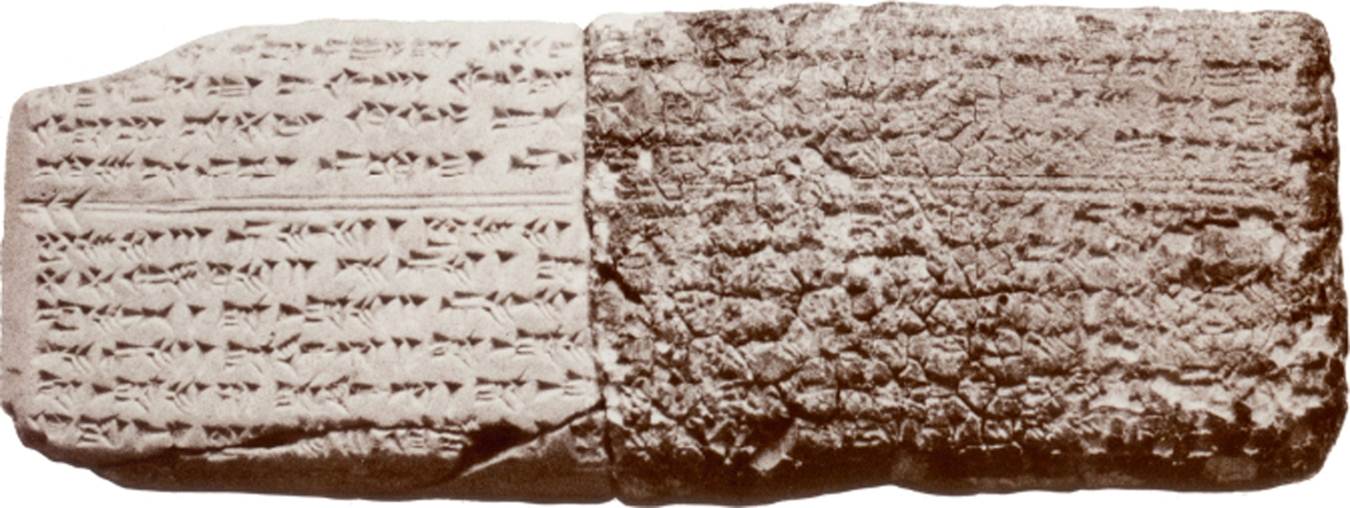
Ancient Babylon (ca. 1700 BC)

Ancient Greece (ca. 200 BC)
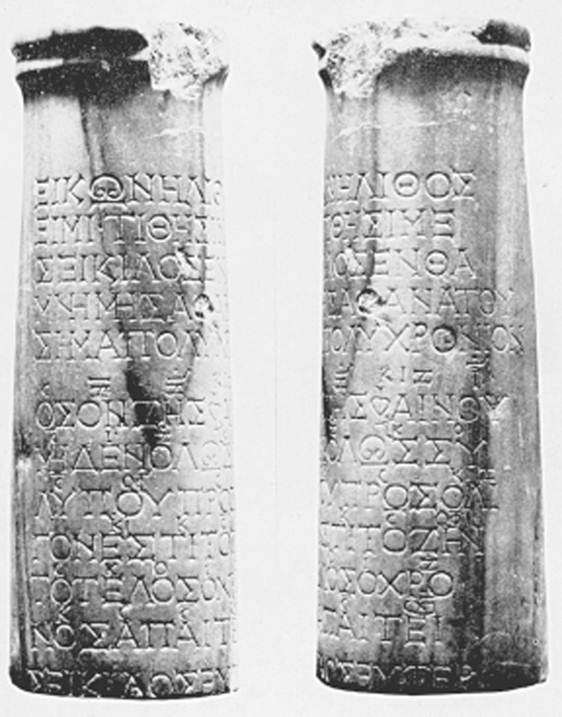
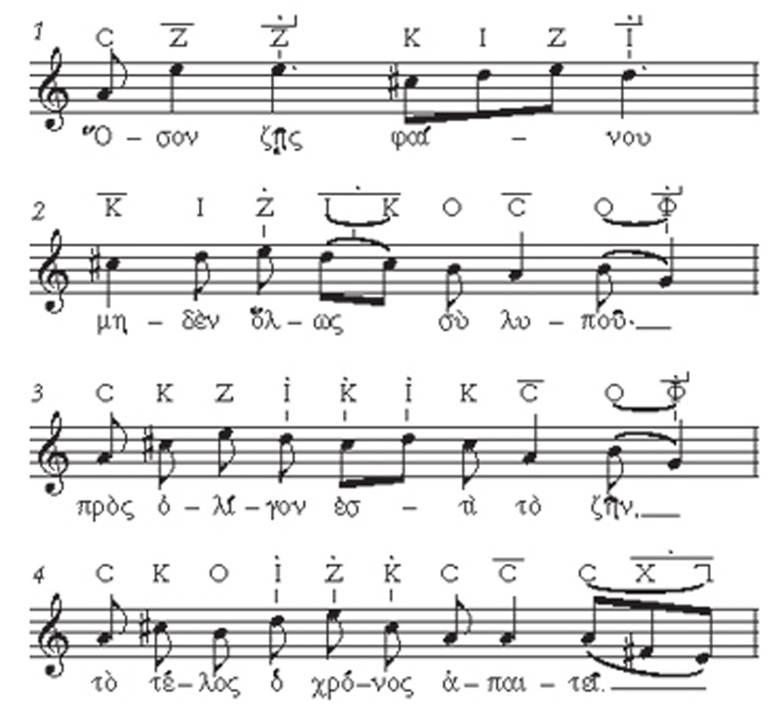
Early Christian Church (ca. 800 AD)
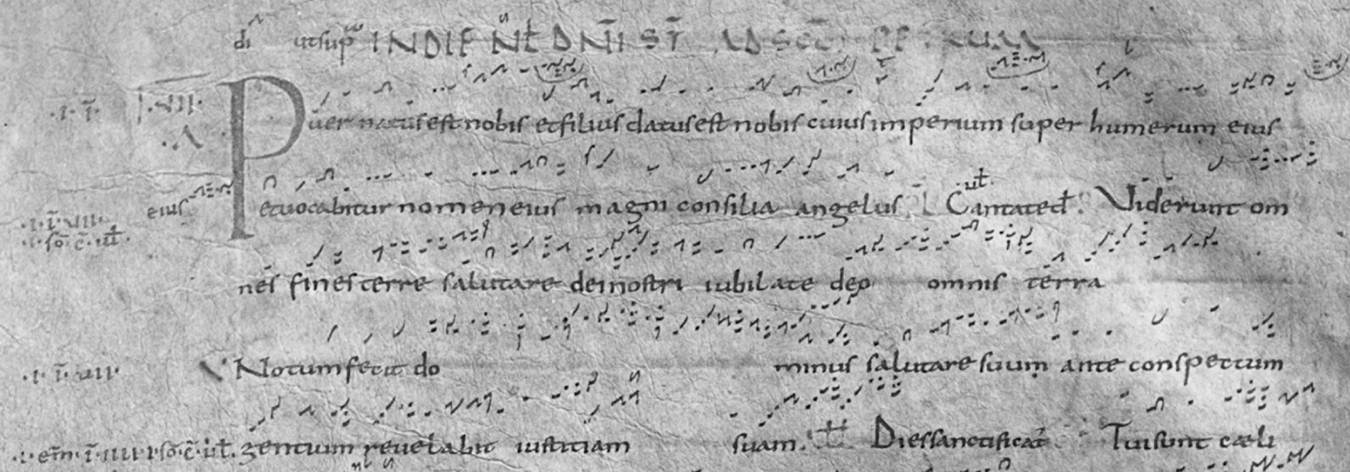
This is an example of neumes - symbols written above a Latin text to help the singers remember how the melody goes
The symbols don't indicate specific pitches or
rhythms - just a basic memory aid
Early Christian Church (ca. 1000 AD)
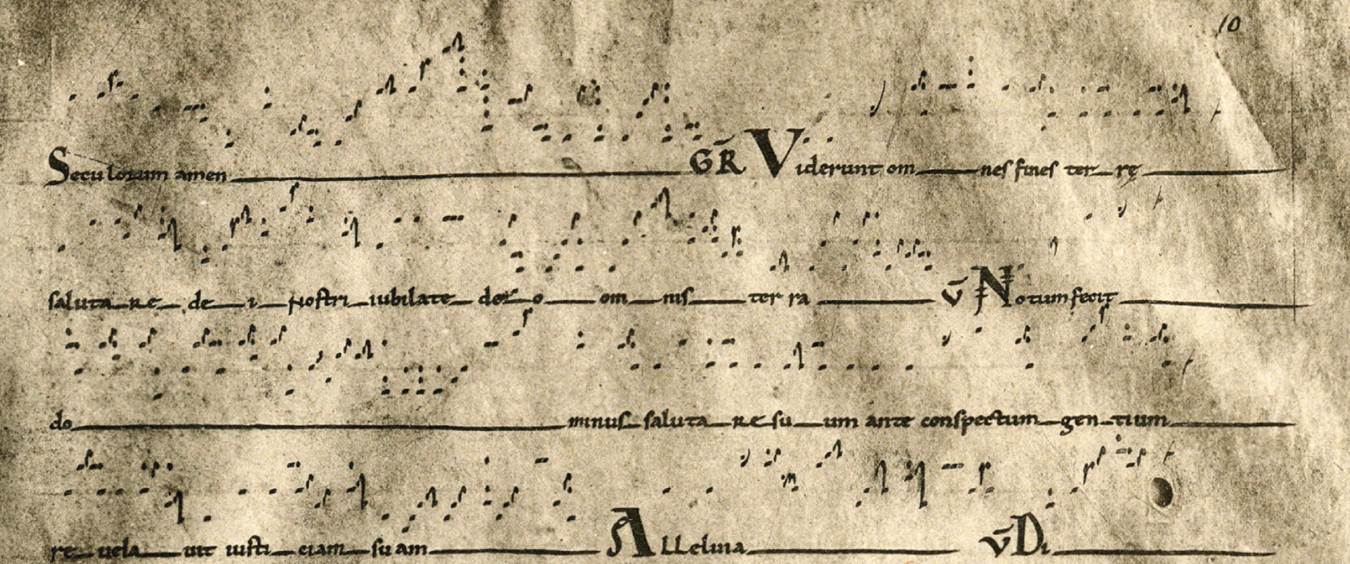
This is an example of heighted neumes - now the symbols more clearly use high and low to indicate pitch height
There is a single line that indicates a single
central pitch (A) - this is the beginning of the staff!
Early Christian Church (ca. 1150 AD)

This is the same music notated using a four-line staff (with different colors for each line), known as Guidonian notation
At the beginning of each line are letters indicating the pitch of each line - these letters evolved into our clefs
Early Christian Church (ca. 1300)
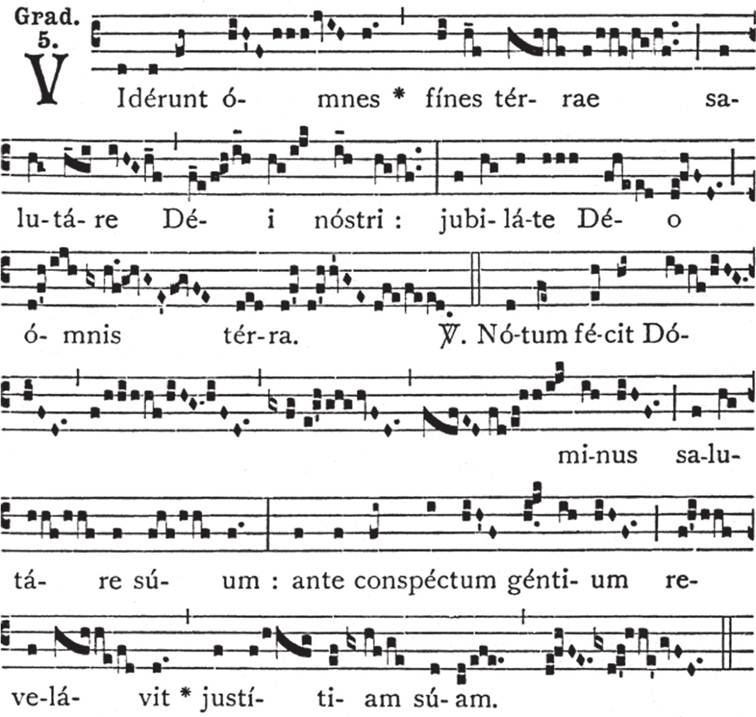
Here is the same music using a more modern style of plainchant notation (still used in monasteries today)
Some of the neume symbols are actually groups of pitches rather than a single pitch. When two notes are stacked together, the bottom note is sung first.
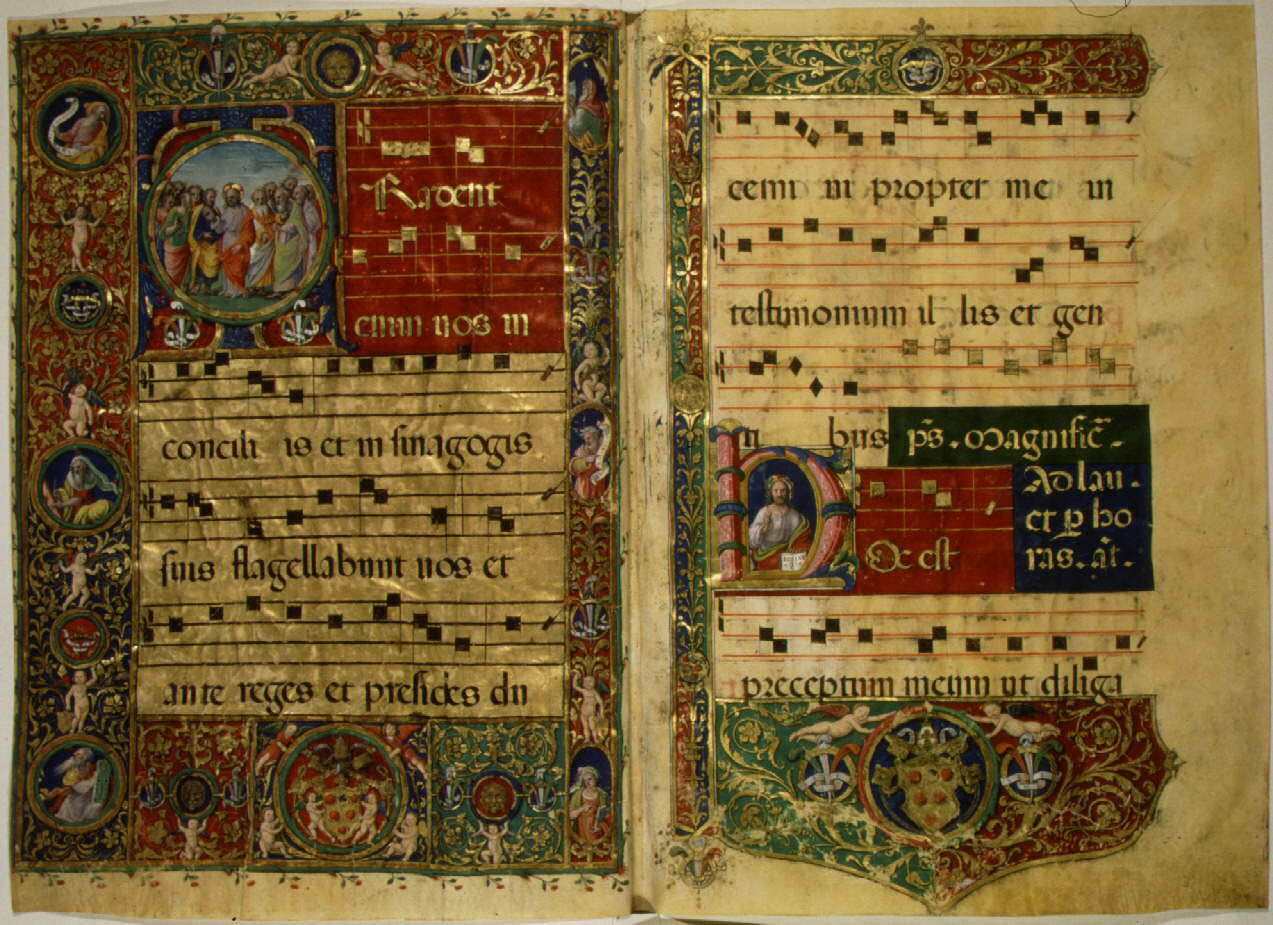
Here is a much fancier illuminated manuscript using the same four-line staff and neumatic notation